Here's an illustrated look at how whitetail antlers grow, month to month.
As a wildlife artist and hunter, I spend a lot of time looking at antlers, whether painting them in my studio or evaluating them through my binos from the stand. Today we’re going to look at how their annual growth cycle and share a few facts about antlers you may not know.
For the past year I’ve worked hard to produce the art and information for this new print The Scoring & Field Judging of the White-tailed Buck.
It all starts with the pedicle. Antlers grow from the top of pedicles, which begin forming in the fetus. The size and health of the pedicle influences the size and shape of the antler it produces. Additionally, an injury to the pedicle early in the year can cause permanent non-typical traits to form on that antler for the rest of a deer’s life.
Whitetail Antlers are the fastest growing bones on the planet. Some grow over 2 inches in a single day. It’s remarkable what they can grow into in just a few short months.
Changes in the photoperiod thought the year affect the buck’s hormones, primarily testosterone. Peaks and valleys in a buck's testosterone are what trigger ALL his major antler developments throughout the year, from the first sign of growth to shedding his velvet to shedding his antlers in winter.
Here’s what this looks like month to month.
MARCH: Increasing photoperiod triggers the hormones that jump-start new antler growth

APRIL: Antlers begin to grow from their tips (rather than the base) and start as cartilage, then calcify into bone
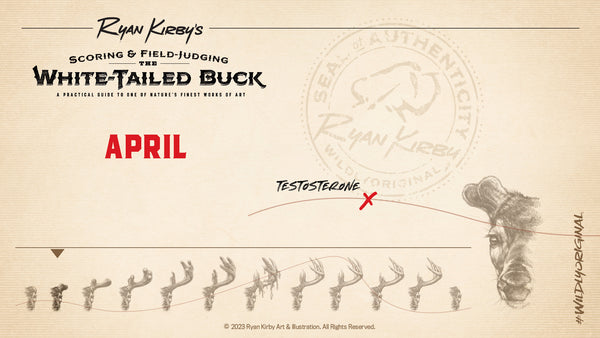
MAY: Bucks consume new vegetation with spring green-up, a much needed protein boost.
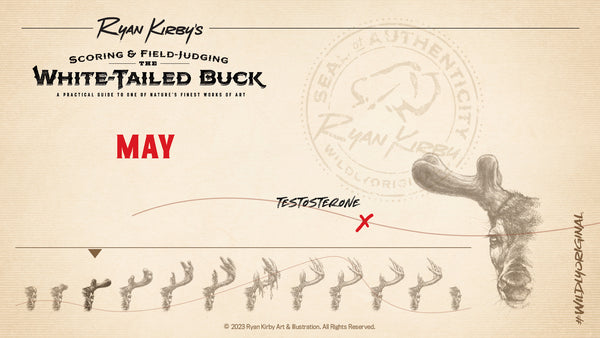
JUNE: Points begin to branch off of the main beam, appearing as large, dark, bulbous forms at the tips

JULY: The most dramatic antler growth occurs in July. His rack will be fully formed by mid-August.
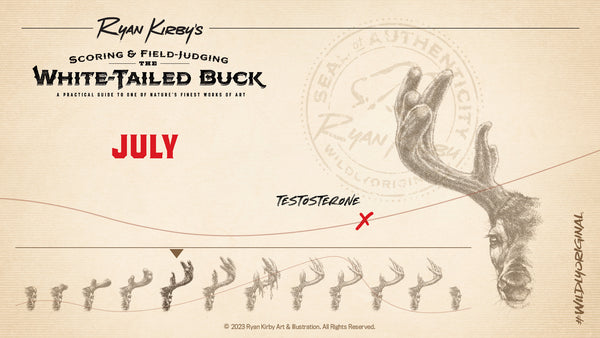
AUGUST: Bucks experience seasonal osteoporosis, pulling minerals from their skeleton and devoting them to their hardening antlers.
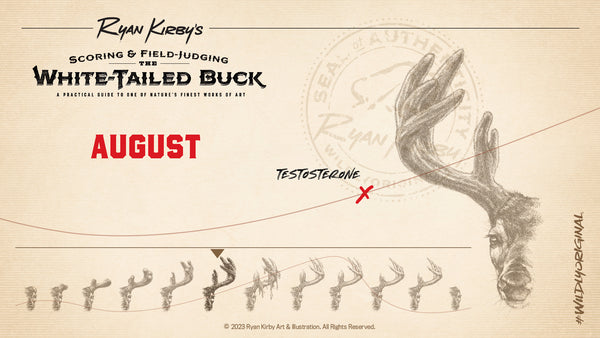
SEPTEMBER: Bucks rub off their velvet on trees, revealing hard antler in a matter of hours.
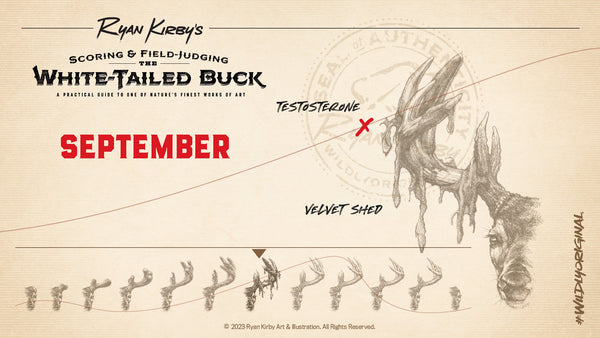
OCTOBER: When rubbing, a buck's forehead gland leaves scent on the exposed cambium layer that contains information about his identity.
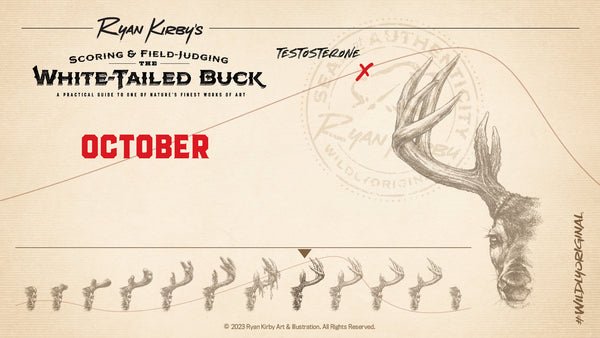
NOVEMBER: Antlers earn their keep during the rut, used for fighting off rival bucks for highly contested breeding rights.
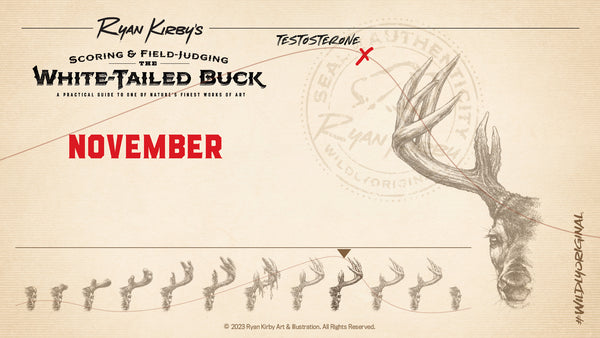
DECEMBER: Roughly half of all bucks will break points off, with the most common being a brow tine or a G3.

JANUARY: Harsh winter weather, an injury or other severe stress can sometimes cause a buck to drop his antlers early.
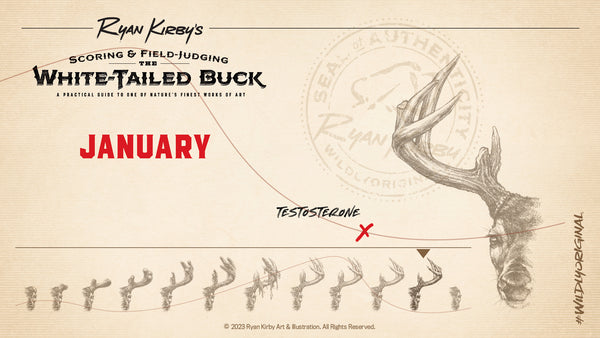
FEBRUARY: A drop in testosterone causes the antler to finally separate from the skull.
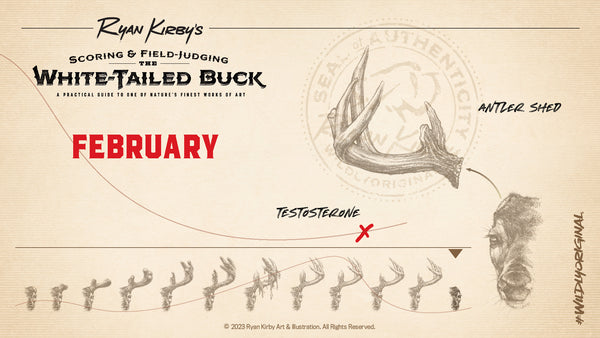
Hardened antlers contain 11 different minerals, primarily calcium (19%) and phosphorus (10%). Squirrels and other rodents consume shed antlers for these valuable minerals, rarely leaving them behind for the next year
One interesting characteristic of antlers is their color. Research has shown that a buck’s rack color is influenced by the amount of oxidized blood on them at the time of velvet shed, as well as the type and volume of trees they rub. Older bucks often have darker racks due to their increased rubbing activity.
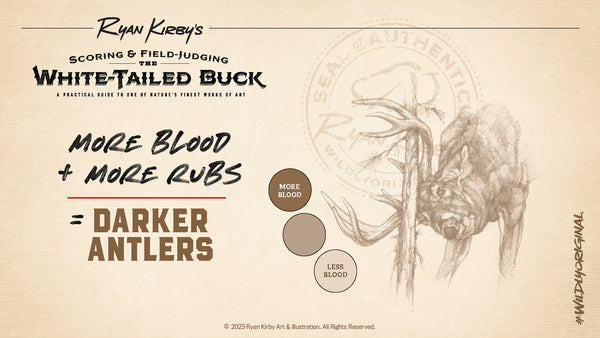
I hope you found this art and information helpful, and it gives you a new appreciation for antlers this season.
As an artist, it’s my passion to enhance the atmosphere of deer camp. The best way I know to do that is through my best-selling paper prints “The Growth & Maturity of the White-tailed Buck", “The Anatomy & Physiology of the White-tailed Buck,” and The Scoring & Field Judging of the White-tailed Buck. The above art and information (plus much, much more) can be found in one place that you can hang on the wall. It’s been an honor to produce them, and I guarantee you they’ll be the talk of hunt camp!
Wishing you a successful deer season,

Here's a video that explains in more detail how white-tailed deer antlers grow:

